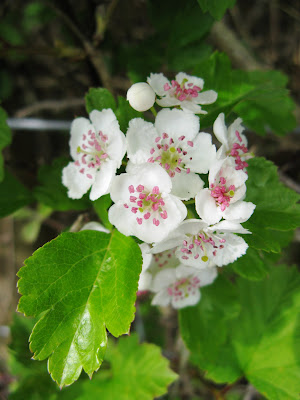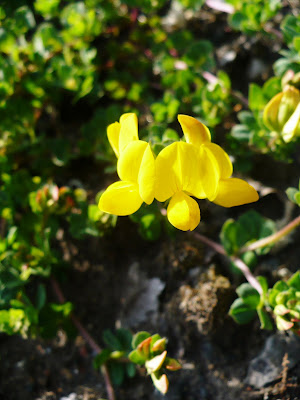
Brett Mills a lecturer in film studies at East Anglia University has suggested that natural history film makers are infringing the right to privacy in some of their subjects by coming up with more and more sophisticated ways of obtaining their images (
http://news.bbc.co.uk/1/hi/education/10093327.stm). It seems to me that this is further anthropomorphism of animals ('rights' to anything are basically a human invention). I am not wholly convinced by the 'shy' Narwhal that retreated under the ice so as not to be filmed. Do predators infringe the rights of their prey by watching them? It would seem to me rather sad if natural history films were banned as I tend to agree with the viewpoint that we need to understand the natural world in order to value it (but then a Biologist would say that wouldn't he?). Does it also mean that people who simply watch animals (like the above mating snails) are voyeurs? Sounds like a bag of worms to me.













 In Bynea, the Common mouse-ear (Cerastium fontanum); Hedgerow cranesbill (Geranium pyrenaicum); Marsh cranesbill (Geranium palustre) and Meadow buttercup (Ranunculus acris) were all in flower. There was also lots of activity from large (Bombus terrestris) and small (Bombus pratorum) bumble-bees. In Penclacwydd, the Bluebell (Endymion non-scriptus); Silverweed (Potentilla anserina) and Hawthorn (Crataegus monogyna) were in bloom. There were lots of mating St Mark's flies (Bibio marci) buzzing around a little late for their name day. In Loughor, Wild turnip (Brassica rapa); Sweet allison (Lobularia maritima); Rock cinquefoil (Potentilla rupestris) and Ramsons (Allium ursinum) were out and about.
In Bynea, the Common mouse-ear (Cerastium fontanum); Hedgerow cranesbill (Geranium pyrenaicum); Marsh cranesbill (Geranium palustre) and Meadow buttercup (Ranunculus acris) were all in flower. There was also lots of activity from large (Bombus terrestris) and small (Bombus pratorum) bumble-bees. In Penclacwydd, the Bluebell (Endymion non-scriptus); Silverweed (Potentilla anserina) and Hawthorn (Crataegus monogyna) were in bloom. There were lots of mating St Mark's flies (Bibio marci) buzzing around a little late for their name day. In Loughor, Wild turnip (Brassica rapa); Sweet allison (Lobularia maritima); Rock cinquefoil (Potentilla rupestris) and Ramsons (Allium ursinum) were out and about.








+Loughor.jpg)
+Mumbles.jpg)
+ventral++Hidden+Forest.JPG)
+lateral+Hidden+Forest.JPG)
++Hidden+Forest.JPG)
+faces+Hidden+Forest.JPG)
+full+Hidden+Forest.JPG)
+close+up+Rumtek.JPG)
+on+bar+Hidden+Forest.JPG)
+on+wire+Sikkim.JPG)
+Hidden+Forest.JPG)
+back+Hidden+Forest.JPG)
+Gangtok.JPG)
+closer+Himalayan+Zoological+Park.JPG)
+Kolkata.JPG)
+lateral+Gangtok.JPG)
+faces+Hidden+Forest.JPG)
++in+silhouette.JPG)













